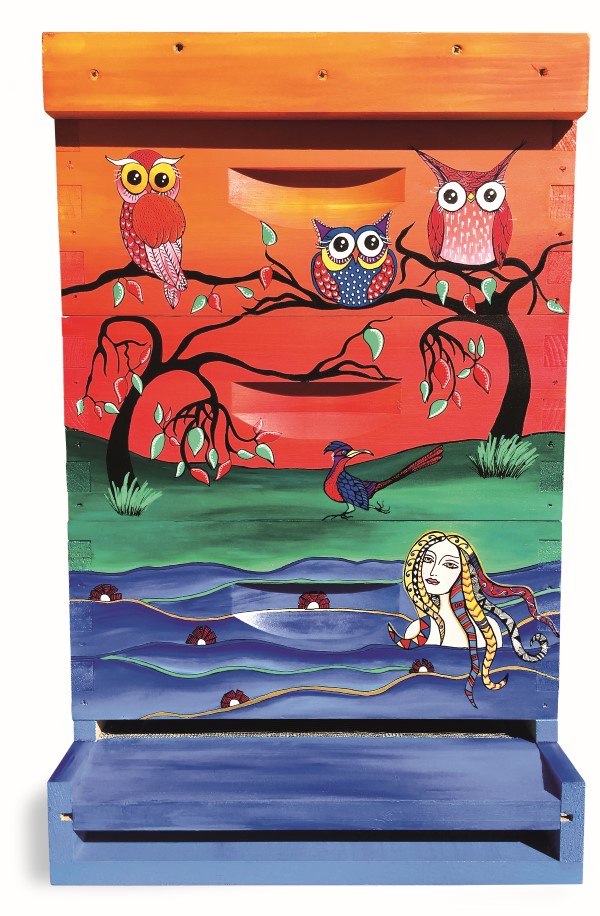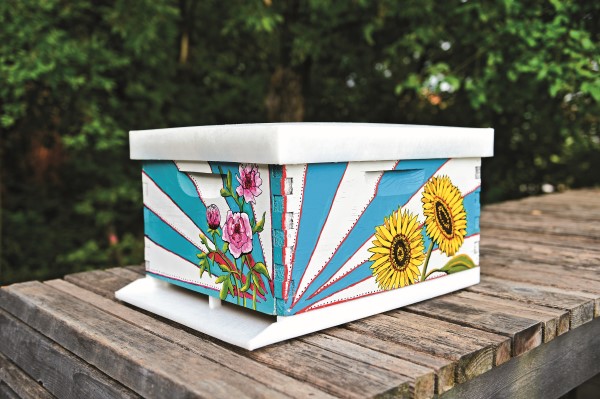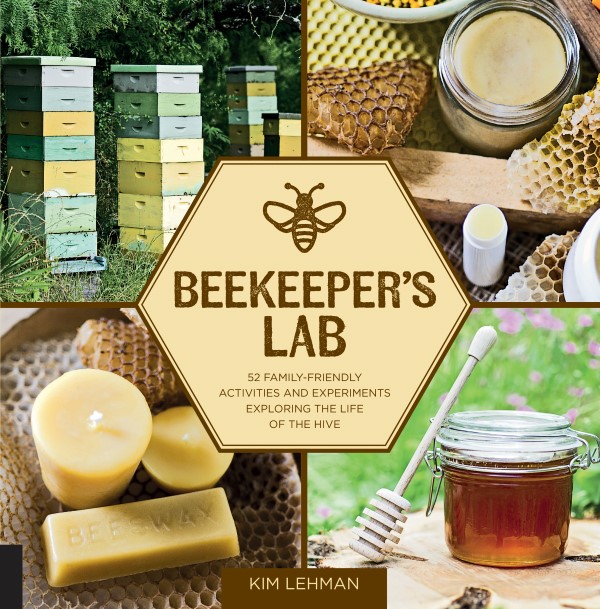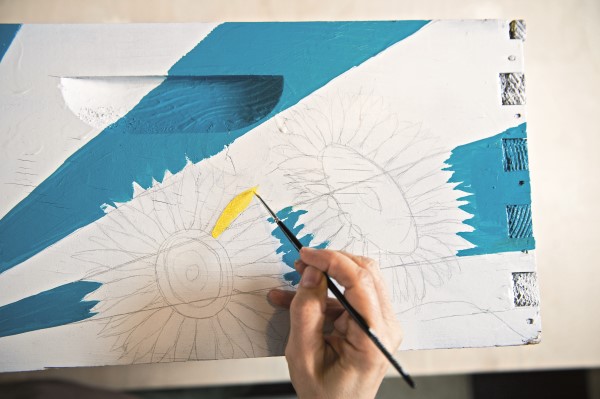People have been creating intricately painted beehives for hundreds of years. It is a practical and fun way to make hives into a form of garden art, as well as a great way to get children involved and teach them about the importance of bees.

Kim Lehman is the author of the fabulous book Beekeeper’s Lab: 52 Family-Friendly Activities and Experiments Exploring the Life of the Hive and she is here today to give us the skinny on painting beehives. Kim’s book contains everything you need to know about beekeeping, with projects suitable for all ages.
How to Paint Beehives
By Kim Lehman
Beehives are a blank canvas just waiting for inspiration to strike. Pick up a paintbrush and jazz up your apiary with one-of-a-kind creations.

Bee Buzz
Beekeepers in Slovenia have a long history of beautifully painted beehives going back over 250 years. Beehive painting originated both as décor and with the belief that brightly-colored hives would make it easier for bees to know where to go.
Fun for Kids
To do this project with kids, instead of exterior paint use nontoxic markers, tempera paint, chalk, crayons, or even mud for finger painting. Cover with a clear water-based sealer or repaint when weathered.
Design
Start by brainstorming design concepts for your hive. Here are some things to consider:
- Will your hive have a theme?
- What images or subjects would you like to work with?
- Do you want to make a statement or express a thought or an opinion?
- Would you like realistic artwork or an abstract design?
- Do you prefer to paint random and spontaneous shapes, colors, and patterns?
- Will it be a group or family project, with each person designing and painting one panel of the hive?
 Planning
Planning
- Be bold, big, and colorful with your design. Details are difficult to see from a distance.
- Sketch many different designs for the art hive on paper. Do not spend time on details. Pick out your favorites to further develop.
- Choose the colors you will need. Black is great for outlines. Primaries (red, blue, and yellow) make it possible to mix your own colors.

Materials
- Pencil
- Paper
- Exterior latex paint
- Acrylic craft paints
- Paintbrushes in a variety of sizes
- Polyurethane (optional)
Make it!
- Completely cover the hive with a base layer of exterior latex paint.
- Lightly sketch the design on the hive using a pencil. Do not worry about putting the lines on perfectly.

- Draw with your full arm, not just with your fingers.
- If you are painting the outlines in black, do that first. Allow the paint to dry. Go back and fill in with color. Acrylic paints dry a little slower and contain more pigment for better coverage. Exterior latex is much cheaper.
- Paint away! If using acrylics, apply a protective polyurethane coat to the finished painting.

Take it Further

- Make a collage by gluing photos and pictures onto the hive. Cover with a protective polyurethane finish.
- Promote artistic expression and honeybee awareness at a public event. Supply permanent markers for people to decorate a hive or write a message of gratitude to the bees or a beekeeping advocate.
- Have a “Wild and Wonderful Beehive Tour” by displaying hives painted by local artists in public places, such as the library, city hall, grocery store, farmers’ market, or other local businesses. Auction off the hives or cast monetary votes as a fundraiser.
Reprinted with permission from Beekeeeper’s Lab: 52 Family-Friendly Activities and Experiments Exploring the Life of the Hive by Kim Lehman © 2017. Published by Quarry Books. Photography © Anna Gieselman.
About the Author

Kim Lehman has been sharing the many benefits of honeybees, nature’s tiny treasures, for over twenty-five years. Known as a dynamic educator, musician, and author, Kim has presented hundreds of programs at schools, libraries, museums, and nature centers. As part of her column for kids in Bee Culture Magazine, Kim began the Bee Buddies Club which now has members in every state. She founded the American Beekeeping Federation Kids and Bees Program and directed this educational service about honey bees for the public in 17 states. Check out her book Beekeeper’s Lab: 52 Family-Friendly Activities and Experiments Exploring the Life of the Hive.







I don’t have bees but these are beautiful.